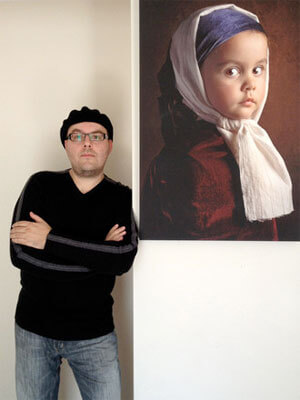Australia-based photographer Bill Gekas has a real knack for portraiture, particularly the kind that results in an homage to many Old Masters of classic paintings, including artists like Vemeer and Rembrandt. Using his five-year-old daughter as the model, Gekas recreates many mid-18th century settings that are inspired by portraits of adults from famous paintings. He styles the environment and his daughter to fit the time period, and uses strobe lights to maintain the appearance of soft, natural lighting. The self-taught photographer learned on 35mm and has since turned to digital techniques. He uses post-processing to put the final touches on each of his photographs. Through hard work, experimentation, and a grand vision, the talented artist has successfully produced an extensive collection—a tribute to both the well-known artists as well as to his young daughter. As Gekas has evolved as a photographer, so has his unique style. He says "Don’t be scared of taking certain elements from different works and molding them into something to call your own. You might like the lighting from a photo you saw somewhere, a prop from another photo, colors from another. The key is not to limit yourself with the excuse, ‘It’s all been done before.’ Yes, many things have been done before, but with some careful thought you can adjust a concept to give it your signature. Experiment!”
From www.billgekas.comMy name is Bill Gekas and I was born and live in Melbourne, Australia. A self taught photographer that learnt the technicals of photography using a 35mm film slr camera from the mid 90's and switched to digital in 2005, practicing the art of photography and constantly refining my style.
Source: My Modern Met
